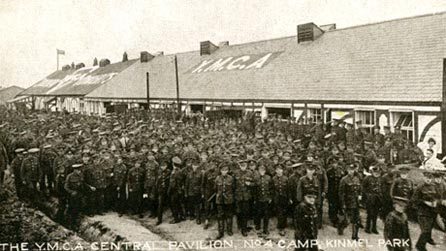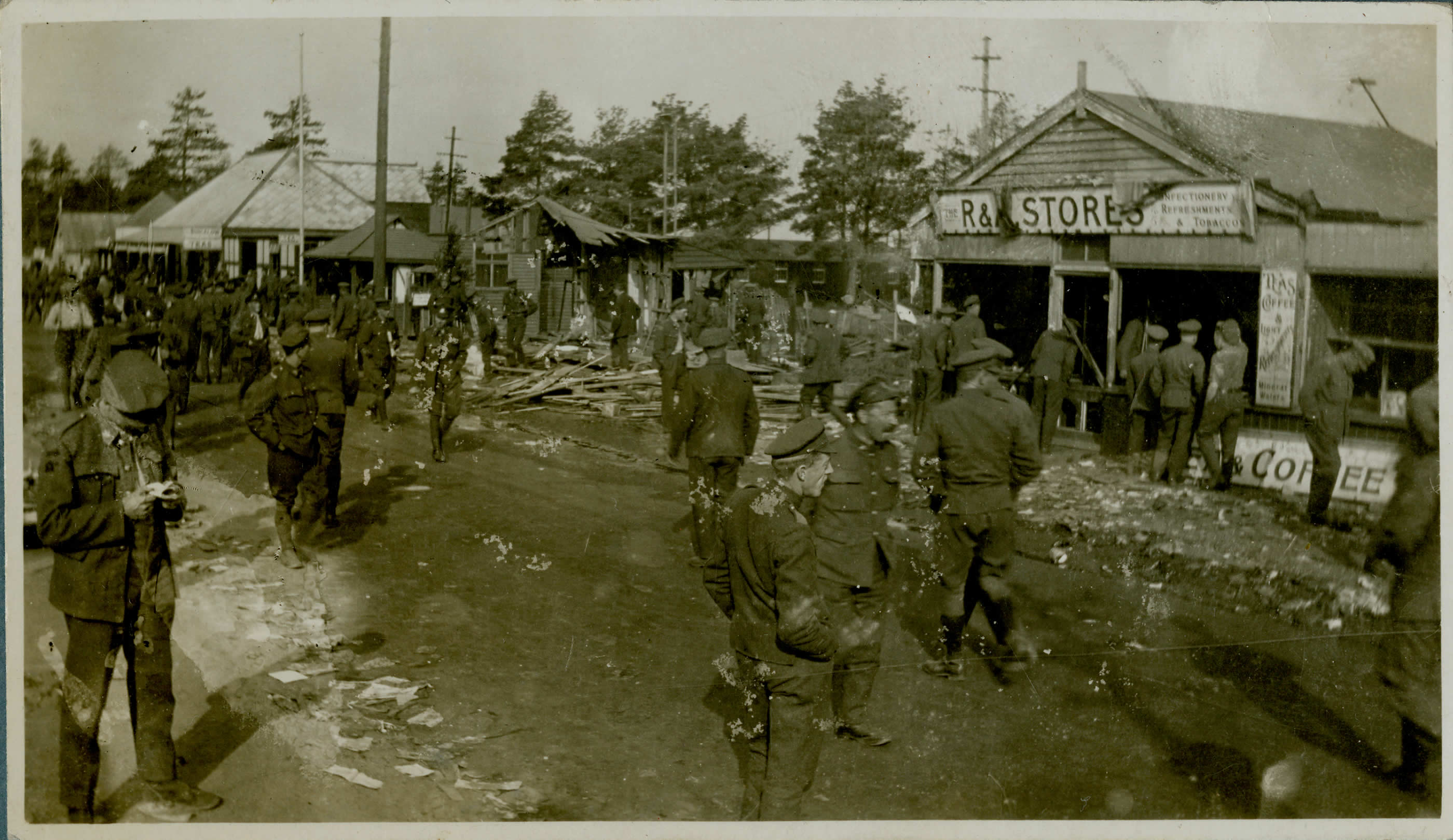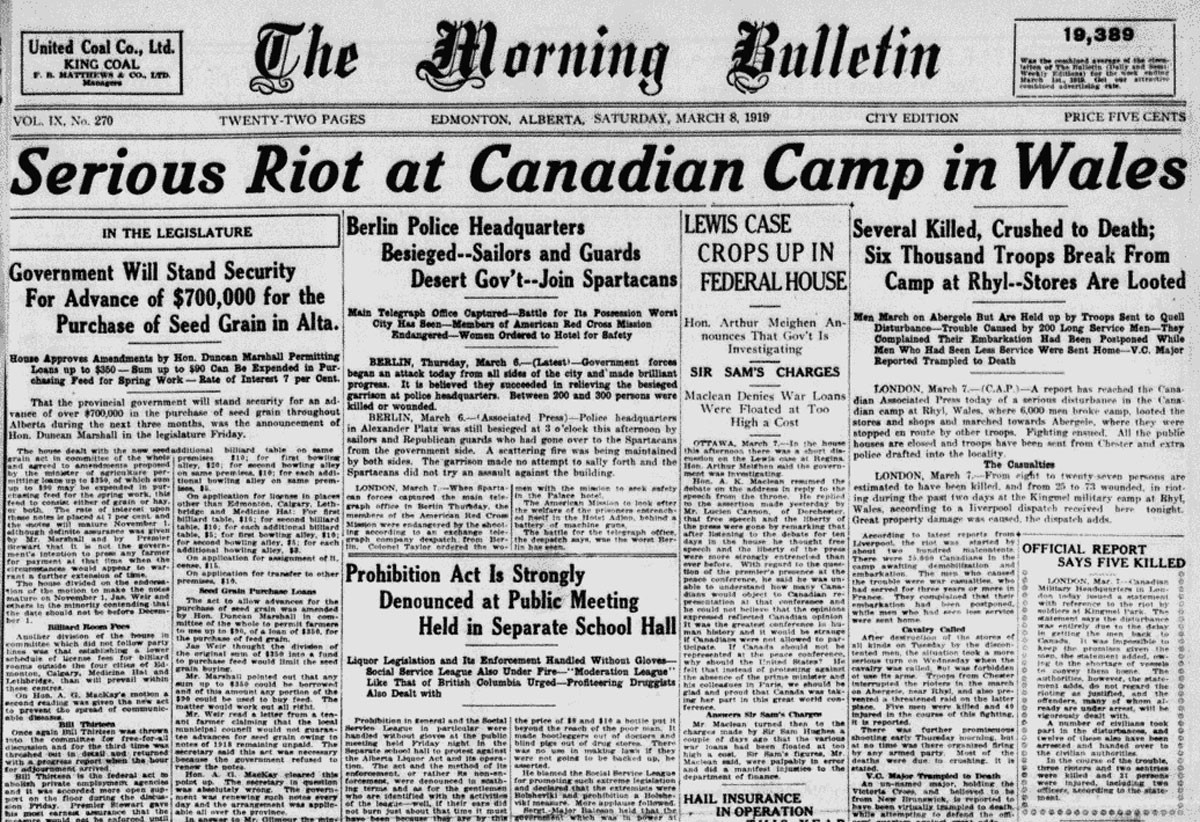The Kinmel Park Riots: March, 1919
With the war over, the problem of returning all 400,000 troops to Canada arose. The Canadian government had to compete with other countries to hire ships, rail lines had to be checked for safety, and everyone wanted to return home as quickly as possible - both to be reunited with families and to find a job. The goverment's initial estimate was that it would take 18 months to get the Canadian troops home; in reality most were home by mid 1919 - but this was still not fast enough for many. While awaiting their turn, Canadian soldiers were ordered into a series of military camps in England and Wales. The camps were cold and wet through the winter, food was poor, and the men had too much time on their hands.

At Kinmel Park conditions were far from ideal for the 17,400 Canadians. Their days were filled with exercises that they thought meaningless, medical examinations, route marches and military discipline and training. For them the war was over and they didn't see the need. They were anxious to return to Canada, not just to their families, but also to get first pick of the available jobs. No one wanted to come home from the war and be unemployed. In late February rumours circulated that a number of large ships had been reallocated to the American troops, who hadn't been overseas for as long as the Canadians. Then General Currie decided to transport the combat veterans of the 3rd Infantry Division back to Canada before the Forestry and Railway Corps men waiting at Kinmel Park.
On the evening of March 4, approximately 1,000 troops rebelled and started a riot. Once the riot started it quickly got out of control, spreading from one of the canteens, to a sergeant's mess quarters and then into the small shops selling over-priced goods. The overall damage was calculated to be in the thousands of dollars, with stolen or destroyed clothes, food, alcohol, cigarettes and tobacco and military equipment.


On the morning of March 5th the officers tried to regain control of the camp by organizing some of the 'loyal' troops to help restore order. When they encountered one of the mobs that had formed things quickly got out of control. Five Canadians were killed in the subsequent encounters and 28 wounded. In the aftermath, 27 Canadians were court martialed and sentenced anywhere from 3 months to 10 years. The soldiers stationed at Kinmel were given priority for returning to Canada, and by March 25th approximately 15,000 had been returned to Canada. To cover the mutiny up, the British and Canadian government tried to seal all records of it for 100 years.